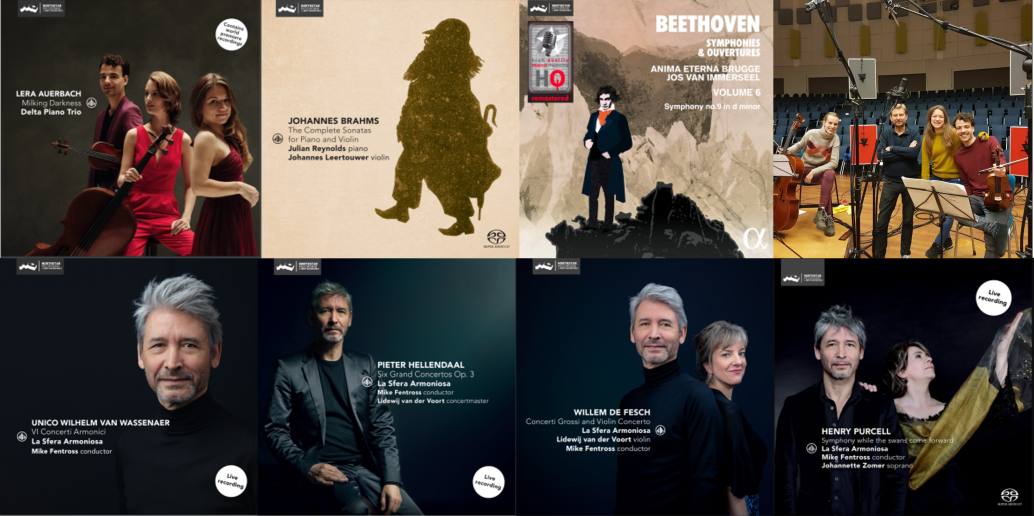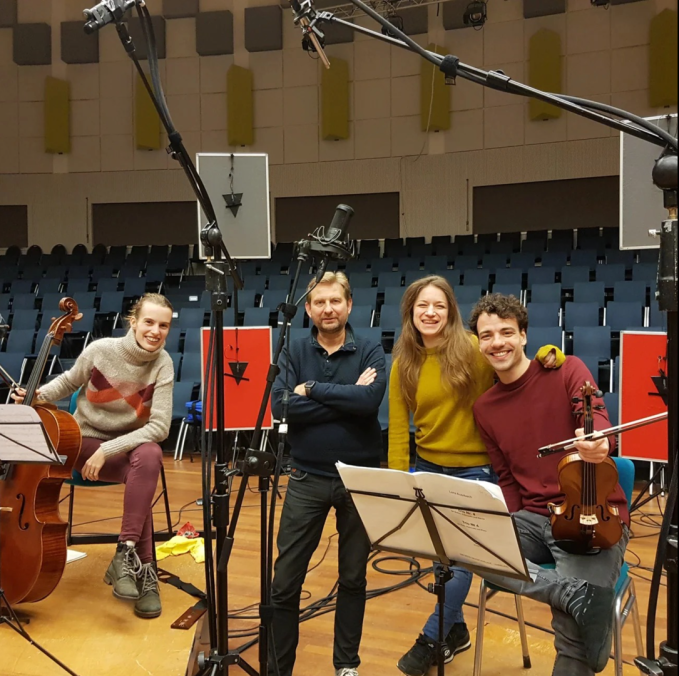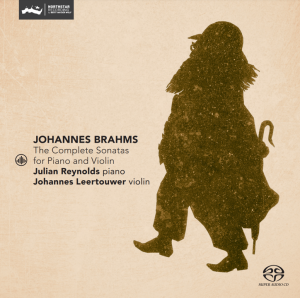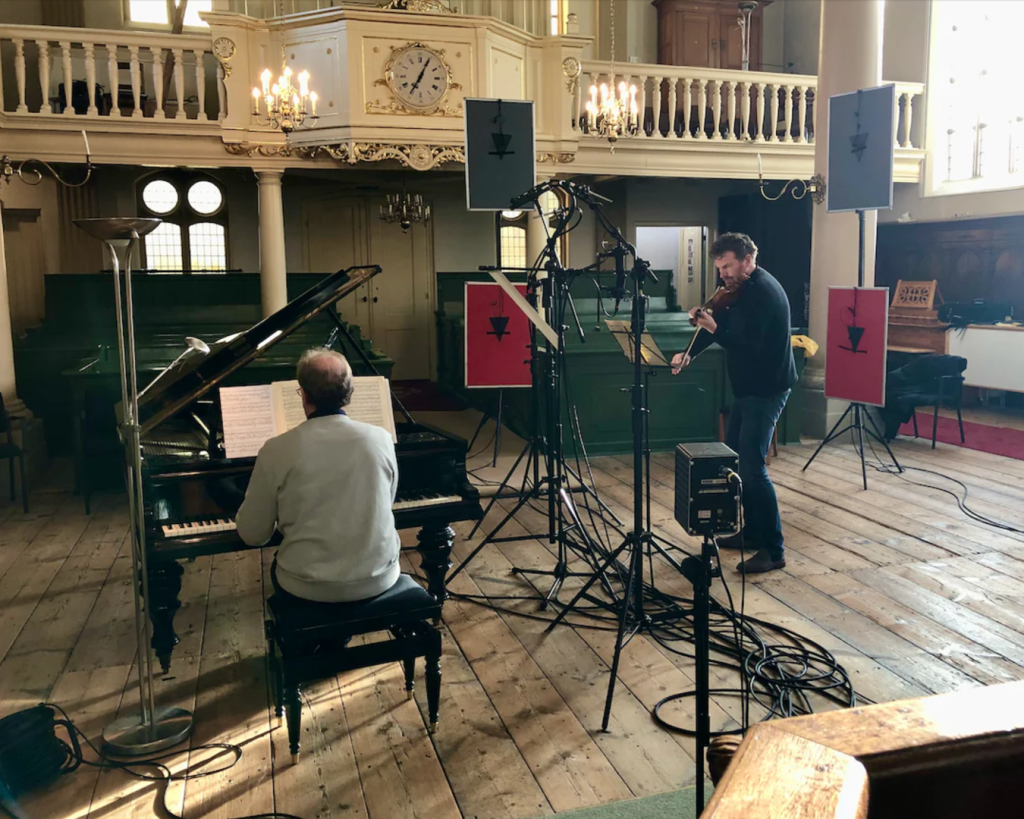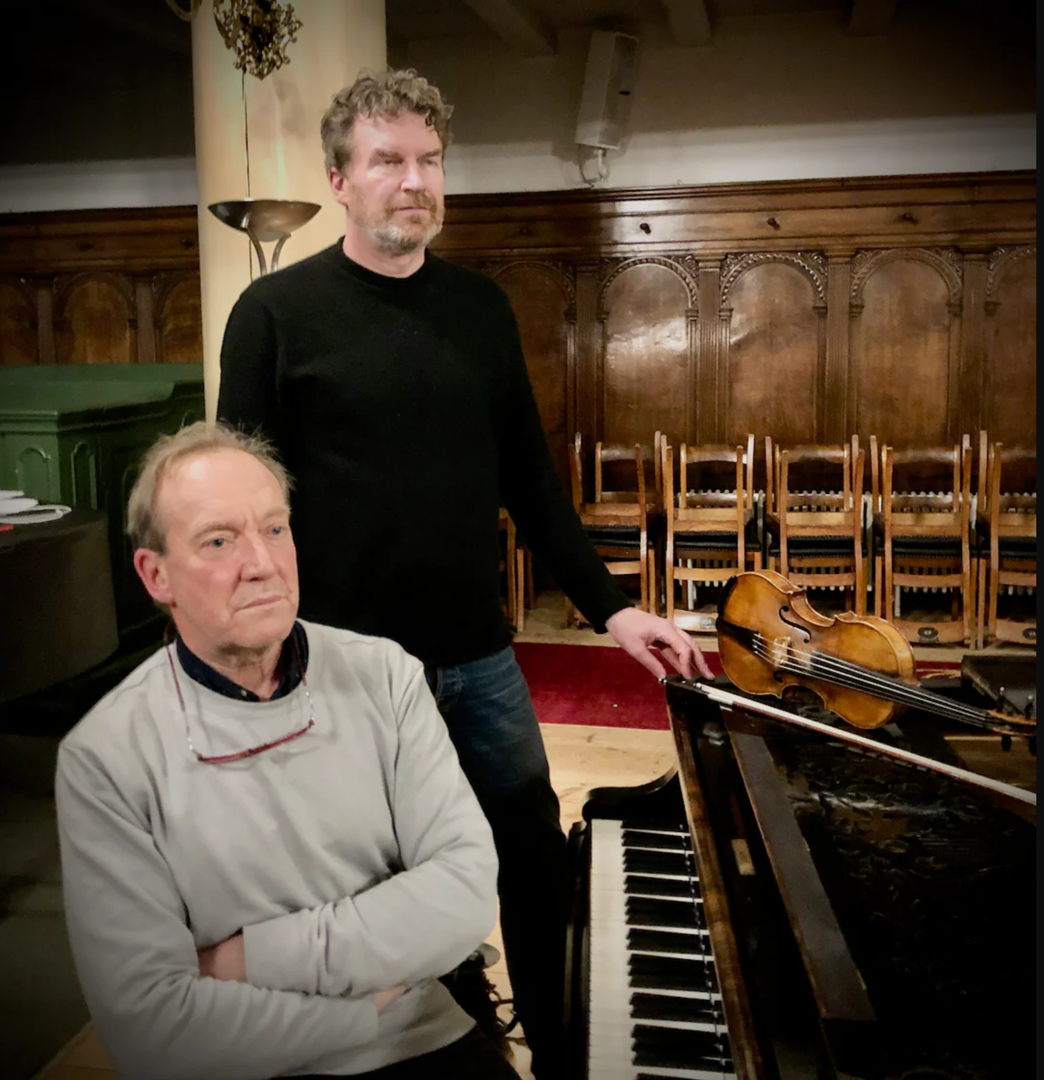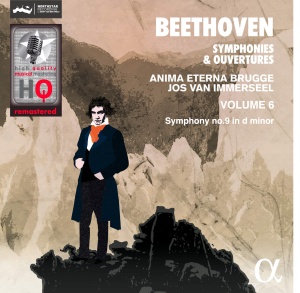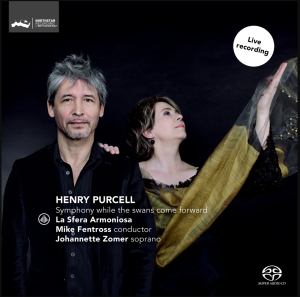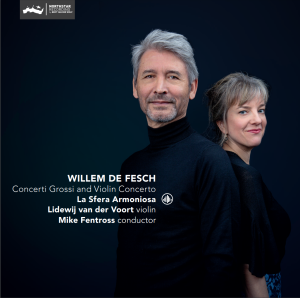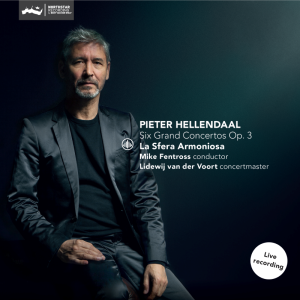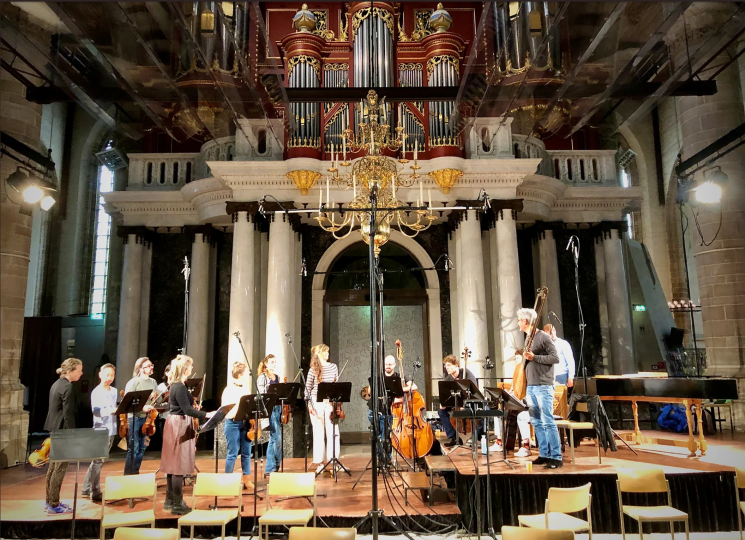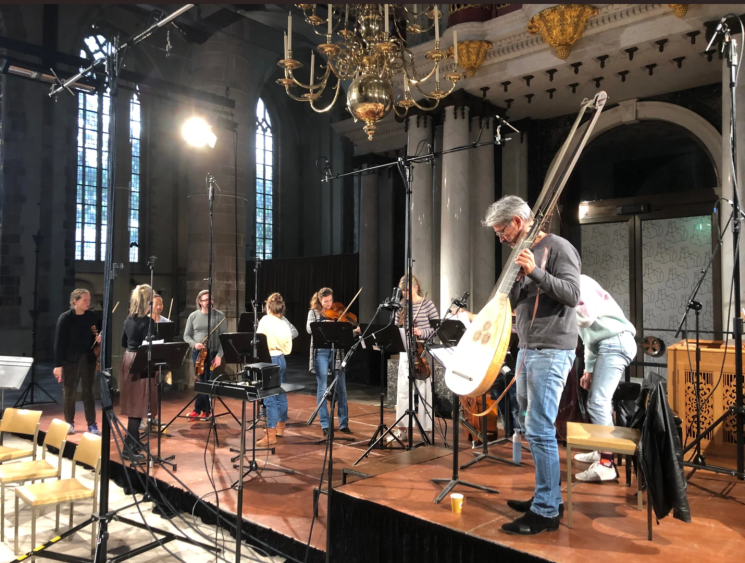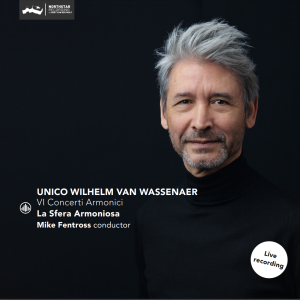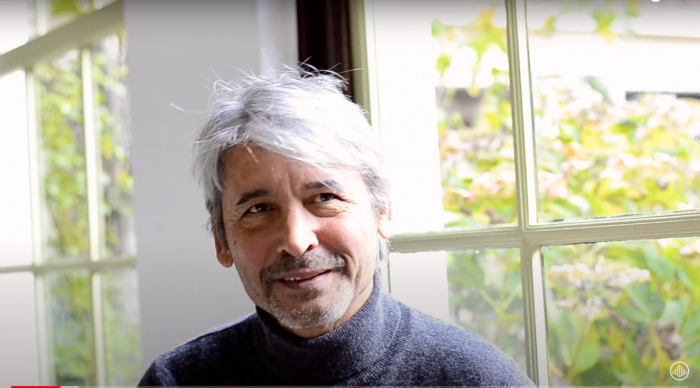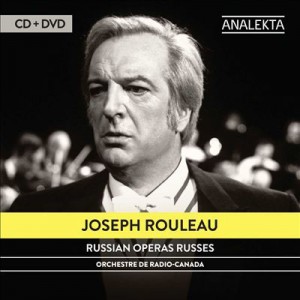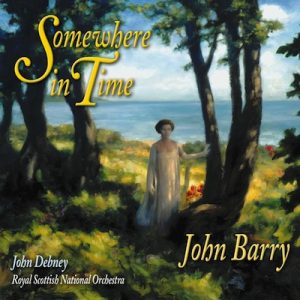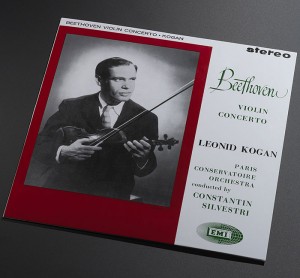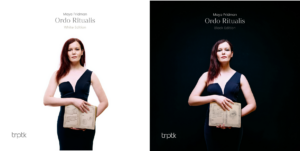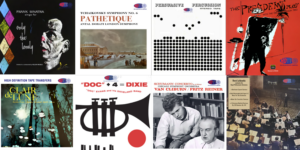If you've followed along with some of my other articles, you may have picked up on how much I admire the recordings made by Bert van der Wolf of Northstar Recording Services (see HERE, HERE, HERE and HERE). Bert ranks very highly among a small group of highly talented independent recording and mastering engineers whom I greatly respect. In addition to more contemporary fare, as in the excellent Delta Piano Trio recording of Lera Auerbach's works below, Bert records a wide variety of outstanding performers of Baroque music. I've previously written about the excellent recordings of Gunar Letzbor and Ars Antiqua Austria, Jan Willem de Vriend and Combattimento Amsterdam, and the series from Sigiswald Kuijken and La Petite Bande. And, he has made many wonderful recordings within the mainstream catalog, including the superb new set of the Brahms Complete Sonatas for Piano and Violin reviewed below, and the marvelous Beethoven cycle of Symphonies and Overtures by Jos Van Immerseel which Bert has recently remastered in its full DXD quality sonic glory.
I'd like to additionally explore here some recordings Bert has made with Mike Fentross and La Sfera Armoniosa. Fentross and his compatriots seem to be on a mission of bringing to light hidden Dutch treasures of the 17th and 18th centuries. And in these first four albums for Challenge Classics, they are doing a marvelous job! They are uniformly excellent, both the performances and the recording quality. And a joyful discovery of composers new to me.
Milking Darkness, the music of Lera Auerbach, Delta Piano Trio. Challenge Classics | Northstar Recording 2023 (DXD) HERE
Lera Auerbach (1974) is a musical force. Her creativity and breadth of musical activity is breathtaking: composer, award winning poet, painter, pianist, conductor... Her 4th Violin Concerto “NYx: Fractured Dreams” was commissioned and premiered by the New York Philharmonic with Alan Gilbert and Leonidas Kavakos, and the Vienna Radio Symphony Orchestra premiered her symphonic poem Eve's Lament with Marin Alsop. In 2022, the Nuremberg State Philharmonic presented the world premiere of Symphony No. 5 “Paradise Lost” conducted by Joana Mallwitz, and her Symphony No. 6 'Vessels of Light,' a commission of Yad Vashem – The World Holocaust Remembrance Center and received its American premiere at Carnegie Hall on April 19, 2023.
In this album, the very talented Delta Piano Trio give us premier recordings of three of her works: Piano Trio No. 3 (2013, revised 2018), Piano Trio No. 4 (2017) and Milking Darkness (for solo piano) (2011). Additionally, we are treated to the intriguing Lonely Suite - Ballet for a Lonely Violinist, Op. 70 (for solo violin) (2002) and Three Dances in the Old Style, Op. 54 (for violin and cello) (2000). This is a challenging and entirely remarkable program of music bringing us a broad introduction to the creative musical mind of Lera Auerbach.
I say "challenging" because the music is both immensely challenging to perform and intensely challenging for the listener to absorb the complex and highly inventive musical content. This is not light, sweet, idyllic music. It is intense, often dark, and constantly shifting, probing, prodding. And well rewarding of one's attention and effort!
The Delta Piano Trio worked intensely with Auerbach to prepare this album. Of her music, they write, "Many composers create something 'beautiful,' outside human reality. Instead, Lera's music is raw as well as human. She never eases up on what she wants to express, which would rob the music of all its fervour." They say it was Auerbach's own idea to call this album Milking Darkness—a fitting description not only of her work as a whole but also of the intense effect her music can have.
The Delta Piano Trio are quite a remarkable trio, and they bring their usual technical mastery to these performances. Their performances in this new recording are a tour de force of high intensity, immense concentration, and forceful communication whether in the solo, duo or trio assemblages required by these various compositions.
I highly encourage you to listen to this album and experience the music of Lera Auerbach. If you've not found her music before now, this is a excellent and compelling introduction.
Delta Piano Trio with Bert van der Wolf (center)
Brahms Complete Sonatas for Piano and Violin, Johannes Leertouwer, Julian Reynolds. Challenge Classics | Northstar Recording 2023 (DXD) HERE
This recording of the complete sonatas is filled with new insights on how this music can be, perhaps should be, played. If you are familiar with other performances, these performances by violinist Johannes Leertouwer and pianist Julian Reynolds will sound different to your ears. And very intentionally so.
Leertouwer writes, "Our recording represents our desire to find the freedom to apply the 19th-century expressive tools of flexibility of rhythm and tempo, of expressive legato, portamento and vibrato that have been largely forgotten or perhaps discarded over the course of last century. These tools cannot simply be dusted off and re-implemented."
I am not the musicologist who can explain to you what they are doing, I can only tell you that this is deliciously different than other recordings I know. There is a subtle shift in phrasing, a gentle flexibility in pace, a greater willingness to linger and to stretch certain elements, a willingness to sound less grand and to be more intimate. Altogether, I find these performances a most welcome change.
Of this recording, Fanfare Magazine writes, "It is imperative this release is recognized for its musicological importance and its musical qualities." And they certainly can determine this better than I and I defer to their declaration. I will simply say, the performances are lovely and most engaging. They have now become my preferred versions to sit back and enjoy hearing.
And the wonderful sound quality delivered by Bert van der Wolf in this recording certainly takes these performances to another exalted level. For those of us who value excellence in sound reproduction, the sound quality is enough to make this a preferred album in our music libraries. When combined with the excellence of the performances, this album is a clear winner all around.
I find that I cannot leave the topic of how different these performances sound compared to others in my library. So, I will finish by sharing here the further comments from Johannes Leetouwer about the choices he and Julian Reynolds made in these performances:
"Our recording represents our desire to find the freedom to apply the 19th-century expressive tools of flexibility of rhythm and tempo, of expressive legato, portamento and vibrato that have been largely forgotten or perhaps discarded over the course of last century. These tools cannot simply be dusted off and re-implemented. As I argued in my dissertation, working with them requires re-inventing them. Portamento for example was a hotly debated subject throughout the 19th century. There is no single model or example of how to apply it today. The same can be said about vibrato. What we can say with certainty is that in the important German violin methods of Louis Spohr and later Joseph Joachim and Andreas Moser, portamento was named as the first and most important means of expression for string players, and vibrato was described as an ornament. When it comes to flexibility of tempo, we can be sure that the 19th-century concept of tempo was more flexible, and that modifications of tempo were much more frequent than in more modern times, when music making has been increasingly influenced by recordings and exact measurements.
"The tone of the straight-strung rather than cross-strung Blüthner we have worked with also opened expressive opportunities with its unapologetic directness of tone and sound... one can justifiably speculate that at least for the chamber works, Brahms' work instrument at home, a straight strung Viennese J. B. Streicher for which he clearly had great affection, provides a tonal sound template for his unique transparency of melodic, contrapuntal and harmonic writing. Our Blüthner shares many characteristics with this instrument, in touch and clarity of sonority."
Leetouwer prefaces these comments with the reservation that "I hesitate to write about what exactly is different. After all the proof of the pudding is in the eating. If our performances do not convince you, the listener, there is little point in me talking or writing about it."
I found the performances most convincing. The eating of the pudding was a pleasure entirely!
Johannes Leertouwer and Julian Reynolds in recording sessions.
Beethoven Complete Symphonies and Overtures, Volumes 1-6, Jos van Immerseel, Anima Eterna Brugge. Alpha Classics and Northstar Recordings 2005 2023 (DXD, stereo, multichannel, immersive, Auro-3D) HERE and HERE
Alpha Classics and the original recording engineer Bert van der Wolf, Northstar Recordings, have gone back to the archives to find the original DXD masters of these wonderful performances that were originally released only on CD back in 2005. Bert has painstaking remastered those original files to release for them for first time in full high resolution stereo, multichannel (5.1, 5.1+4 Immersive, and 5.1+4 DXD Discrete Immersive) and Auro3D formats. Only now can we hear the terrific sonics Bert captured in DXD, one of his earliest recordings using this then new recording technology.
This is a marvelous cycle and a great remastering. I wrote about it in an earlier Notes on Recent Finds, see full review HERE. I'm repeating mention of this release because it is so noteworthy.
Henry Purcell, Symphony While The Swans Come Forward (Recorded in a Live Performance), Mike Fentross, Johannette Zomer, La Sfera Armoniosa. Challenge Classics | Northstar Recording 2018 (DXD) HERE or in DXD HERE
This album contains instrumental and vocal extracts from four of Purcell's operas: The Prophetess, King Arthur, The Indian Queen, and The Fairy Queen. And such wonderful music it is! Fentross and company have gone to great lengths to create performances that are as authentic and reflective of what may actually have been heard in Purcell's time as they possibly could do. The strings are completely bare gut and the bows played with 17th century bow hold (the French grip). The trumpets are natural trumpets with no finger holes. The oboe reeds authentically scraped from the inside. The playing practice is equally as authentic as could be interpreted, with the qualities of the instruments having, according to Fentross, "a major impact not just on the sound but also the way of playing and therefore on the way we interpret the music."
The orchestra plays with power but, importantly, with so much transparency and color given the attention to these authentic instruments. When fanfares of drum and trumpet are played, I am completely transported. The immediacy with which the sound of these instruments is captured makes for a dramatic listening experience. Simply stunning dynamics, detail and timbre.
There is an energy to this performance that one so often hears in recordings of live performances before an audience (and which is so often missing from studio recordings). The music of Purcell comes alive in these performances. Yet I was entirely unaware of the audience throughout, and was actually surprised to hear the rousing audience applause as the last track concluded.
Willem de Fesch, Concerti Grossi and Violin Concerto, Mike Fentross, Lidewij van der Voort (violin), La Sfera Armoniosa. Challenge Classics | Northstar Recording 2019 (DXD) HERE or in the native DXD HERE
The music of seventeenth century Dutch composer Willem de Fesch is quite a surprise: fresh, witty, complex and entertaining. I've not heard of Willem de Fesch before this album. And now I am delighted to have come to know some of his music. Mike Fentross writes, "The shimmer of the Italian Baroque, which his contemporaries almost experienced firsthand, was only known to this lesser-known Dutchman by 'hearsay', so to speak." His contemporaries, Handel, Vivaldi, et al, lived within it. But De Fesch was solidly Dutch, born in Alkmaar in 1687 and living as a child in Cologne and later in Amsterdam, De Fesch's life was far from Italy. But he had the good fortune to sing in the choir of Cologne's court chapel under the direction of his teacher, the great Carl Rosier. Amsterdam, the city of great commerce and commensurate wealth, had become an epicentre of music publishers, with many Italian composers getting their works published work there. Vivaldi performs there and in 1729 Pietro Locatelli even opts to move there. So, we can only surmise that this became the crucible in which De Fesch's musical talents developed.
Hans Visser's liner notes tell us, "In 1708 Willem De Fesch is appointed as violinist in the orchestra of the Amsterdam City Theatre. Not a large ensemble, due to the small size of the orchestra pit. Eventually, he becomes the leader of this orchestra, that accompanies operas. He composed a lot of music for stage performances himself... Judging by his music, De Fesch himself must also have been a violin virtuoso. He gained an international reputation as a soloist, especially in Antwerp, where he was in great demand. In 1725 he was appointed Kapellmeister of Our Lady's Cathedral in Antwerp." And in 1731, De Fesch moves to London. He is now in the center of the music world of his day.
What I hear in these performances by this smallish group of a dozen musicians who comprise La Sfera Armoniosa is a set of concerti grossi and concertos that are stylishly entertaining and played with immense artistic skill. It is a pleasure to hear these period instruments played with a skill that one sometime associates only with performance on modern instruments. For here is a generation of musicians who have lived most of their lives with early music, they appear to virtually breathe this aesthetic. There is no "translation" occurring of modern into "historic." The musical performance flows from them naturally, as if born to this aesthetic.
And De Fesch's music shimmers and dances in their hands. It is such a pleasure listening to this music so delightfully performed.
Pieter Hellendaal, 6 Grand Concerti Grossi, Op. 3, Mike Fentross, La Sfera Armoniosa. Challenge Classics | Northstar Recording 2021 (DXD) HERE
London 1758—"In the eighteenth century, London was one Europe's biggest metropoles and also a musical centre of the first order. Musical life in the city relied on a broad class of wealthy amateurs, who were supported in their hobby by countless professional musicians. Concert life had already started there in the seventeenth century: music in public places, accessible for a fee. No wonder that the city was a great attraction for musicians from other countries, especially Germany and Italy. As far as German musical immigration into England is concerned, mention must of course be made of Georg Friedrich Händel (with Umlaut), known in England as George Frideric Handel (without Umlaut). The most famous Italian with an English career is certainly Francesco Geminiani. But Dutch musicians also settled in England to earn a living. Two names should be mentioned in this connection: the first is Willem de Fesch, born in Alkmaar, who settled in London shortly after 1730. Twenty years later, the Rotterdam-born Pieter Hellendaal did the same." (From the liner notes by Dr. Rudolf Rasch)
As much as I have enjoyed and listened to music of the 17th and 18th centuries most of my life, count me clueless about Willem de Fesch and Pieter Hellendaal until this introduction by these albums from Mike Fentross and La Sfera Armoniosa. And such a delightful introduction this has been!
Is the music as consistently creative and inventive as I find Handel, Telemann, Corelli, Geminiani, Monteverdi? I have to admit, no. But is it consistently enjoyable, entertaining music? Oh, my, yes. The Concerti Grossi by Hellendaal on this album are engaging and completely delightful.
The liner notes tell us that "Hellendaal was born in 1721 in Rotterdam as the son of a candle maker. Around 1740 he was in Padua for a while to be trained as a violinist and composer with Giuseppe Tartini, Europe's most famous violin teacher. Hellendaal then settled in Amsterdam, nevertheless chose to leave for London in 1751, presumably with the hope of greater fame and income. The London period lasted from 1751 to 1760. His Six Grand Concertos were issued in 1758 by the London music publisher John Walsh."
In these works, Hellendaal takes the models of his predecessors, Handel, Corelli and Geminiani, as foundations, but then quickly diverges from them as he seeks his own path. The divergences add interest and are nicely accomplished. Hellendaal may be a little known composer, but his concerti are most excellent and highly recommended. Just listen to Tracks 17, 18 and 19, "II. Alla breve" and "III. Affettuoso" and "IV. Presto" from Concerto IV in E flat Major for an example of what I'm enthusing over. The "Pastorale" that closes this Concerto IV is quite lovely and perhaps a highlight of the entire album. In all of these 31 movements, Hellendaal weaves a path that is purely unconventional, entirely his own. If they don't rise to the level of Handel's Opus 3 and Opus 6 Concerti Grossi is not a criticism. Taken for themselves they are most enjoyable, and certainly very stylishly played by La Sfera Armoniosa.
The discovery of lesser known composers is a joyful adventure for which I am grateful to Mike Fentross and La Sfera Armoniosa. This is an example of just how wonderfully rich our heritage of western European music actually is—there is much gold to be mined beyond the major names.
Pieter Hellendaal, 6 Grand Concerti Grossi practice session before the live performance recorded for this album, St Laurenskerk Rotterdam, The Netherlands, October 7th 2021. Mike Fentross on the right with his theorbo.
Unico Wilhelm van Wassenaer, VI Concerti Armonici, Mike Fentross, La Sfera Armoniosa. Challenge Classics | Northstar Recording 2023 (DXD) HERE
With deep resonant chords from Mike Fentross' theobro, La Sfera Armonioso begins Unico Wilhelm van Wassenaer's Concerto No. 1. This mournful Grave movement shortly gives way to a lively Allegro and we're off to the races. And wow, such nice capture of timbre, dynamics and air Bert van der Wolf has achieved in this live performance recording.
Until 1980, these Concerti armonici were believed to have been composed by Giovanni Battista Pergolesi or by Carlo Ricciotti, who published them in 1740 but did not compose them. Thanks to a lucky find by the Dutch musicologist Albert Dunning in 1980, man and music could be connected with one another.
The enclosed booklet tells us that Unico Wilhelm van Wassenaer was born in 1692, the son of Jacob van Wassenaer Obdam. "His life went entirely as one might expect of an eighteenth century nobleman in the Dutch Republic. He grew up in The Hague and took music lessons there. During the summer he probably spent a lot of time at Twickel Castle, a family home in the province of Overijssel. From 1723 onwards, he gained more and more appointments to official positions.
"In 1740, a collection of six concertos for strings and basso continuo, in seven parts—four violins, viola, cello and basso continuo—was published in The Hague under the title VI Concerti armonici. Three names appear in the print: those of Willem Bentinck as dedicatee, Carlo Ricciotti, who signed the dedication and looked after the publication, and 'Alexis Magito fils,' the engraver of the music. There is no mention of a composer." The anonymity of the works lasted for no fewer than 240 years until discovery of a handwritten score of the concertos in the library at Twickel Castle together with a note. The note that Unico Wilhelm added to the preserved score of the Concerti armonici confirms that Ricciotti, leader of his collegium musicum, wanted to publish the concertos. Unico Wilhelm refused. Ricciotti then enlisted Bentinck's help and Unico Wilhelm relented, on condition that his name would not appear in the edition.
For, you see, in the eighteenth century, "it was not fitting for a gentleman in charge of public office to publish music in print, as if he were a music master, a craftsman. He was allowed to engage in music, in fact, he had to engage in music, because it formed part of the education of a gentleman of rank, but he was never allowed to let this take on a professional status."
So now we have this lovely collection of concerti with proper attribution.
Mike Fentross - Conductor and lutenist Mike Fentross has largely earned his credits as an early music specialist. He is working all over Europe as a conductor, soloist and basso continuo player and he is professor of lute and basso continuo at the Royal Conservatory in The Hague. In 2006 he founded the baroque orchestra La Sfera Armoniosa. He also regularly conducts the baroque orchestra and choir of the Royal Conservatory.
La Sfera Armoniosa was founded in 1992 by Mike Fentross and Paulina van Laarhoven and focuses on performing music from the 17th and 18th centuries. In a short time, La Sfera Armoniosa developed to a top level ensemble performing on major European festivals and venues receiving raving reviews over many years for a wide variety of projects.




